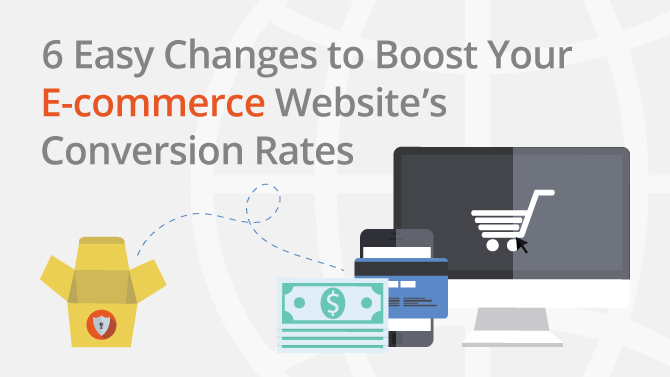When it comes to boosting the conversions rates of any e-commerce website, chances are for every 100 people there will be 100 different theories. Some insist comprehensive rules don’t exist as every online store is different while others like Jenkinson and Associates are adamant that poor conversion rates mean a poor brand and business in general.
Back on planet Earth however, neither of these theories are in fact particularly accurate as regardless of the type of business you’re in, certain tips and tricks can make a real difference to conversion rates. That’s assuming of course that the business being run is one of quality and value, so should this be the case, here’s a quick overview of six universally compatible e-commerce conversion tips that genuinely work:
1 – Improve Site Speed
Right off the bat, nothing kills conversion rates faster or more convincingly than a site with poor page loading speeds. Technically speaking you have no more than a few seconds to hook a would-be customer’s attention in the first place, after which any delay of more than a few seconds between any given pages will result in their hasty retreat. And they won’t be back. And they’ll tell their friends to avoid you. These days, even the most modest of hosting packages offers solid, fast and dependable service so to run a site that crawls along at a snail’s pace really doesn’t say good things about your brand.

2 – Unique Product Descriptions
It’s a common misconception to assume that when a product is listed from an external brand, you must simply copy and paste the product description the brand itself uses. This isn’t in fact the case at all and acting as such does nothing for a site’s prowess in either quality or SEO stakes. By contrast, put the product’s description in your own words with your own unique twist and you add rich, unique content to your site that’s immediately more appealing to would-be buyers. It’s just a case of making sure it’s 100% accurate and 100% flawless – nothing less will do.
3 – Unique Imagery
The same also applies to imagery as there’s really nothing inspiring about the same stock photographs of the same bottle of perfume most of the planet has seen a thousand times over. You don’t even have to be particularly creative or even own your own studio either – it’s simply a case of taking your own photos so that your shoppers can see the actual product they’ll be buying, rather than a standard-use image you took from another site. It’s a small touch, but it works.
4 – Minimal Pre-Purchase Distractions
Surveys have shown that for every additional page you make your shoppers go through prior to making a purchase, the chance of them converting slips by at least 20%. From third-party promos to signing up for obligatory memberships to asking for their life story, you really need to ask yourself where your priorities lie. If you’d rather end up with a big bank of regular customers and conversions you can count on, you ideally should be getting them to the checkout stages of the process as fast as possible – no distractions.
5 – Free Postage
When an e-commerce site insists on adding postage charges on at the very end of the shopping process, bounce rates quite literally explode. It really doesn’t matter if the items themselves are priced so low that it still works out cheaper than shopping elsewhere – paying for shipping is one of the biggest turn-offs the world of e-commerce has ever known. So even if the only way around this is to increase item prices slightly, it’s still a much better approach as it enables you to use the ‘Free Shipping’ banner in all its glory.
6 – Feedback/Testimonials Throughout
Last up, rather than publishing a separate feedback page your shopper have to head to of their own accord, it can and does work much better to slip feedback into as many pages as possible. On your primary landing page for example, you could have a small snippet from someone singing the praises of your customer service. Where applicable, add feedback about specific products to the actual product page. Or where you’ve been complimented for fast shipping, add this to the pre-checkout page. It’s a case of building and maintaining buyer confidence throughout the shopping process, instead of just having a single page saying “Look how great we are!” and then saying nothing throughout the rest of the site..



